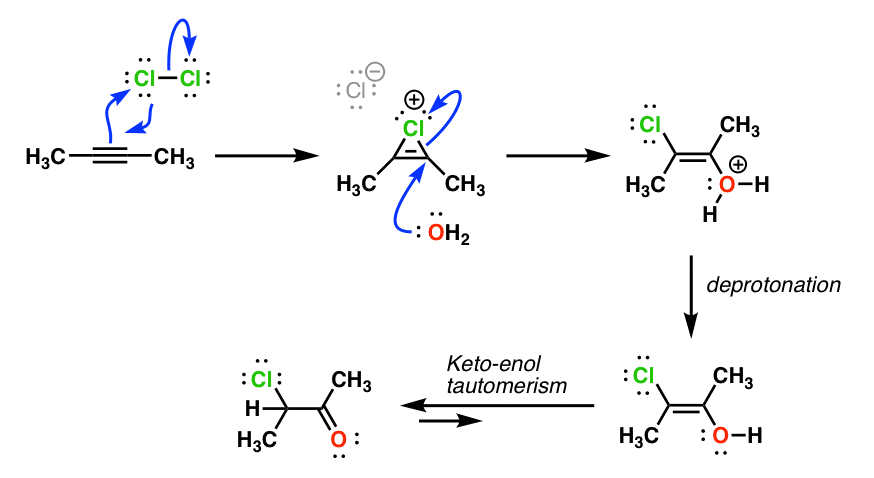According to my textbook, the addition of bromine to pent-1-en-4-yne at low temperature yields 4,5-dibromopent-1-yne:
Why does bromination of the double bond occur selectively?
According to my textbook, the addition of bromine to pent-1-en-4-yne at low temperature yields 4,5-dibromopent-1-yne:
Why does bromination of the double bond occur selectively?
I'm going to take "more reactive" as in the alkene undergoes bromination at a faster rate than the alkyne, which seems to imply that the activation energy of the transition state is greater.
A Kinetic Perspective
The formation of the bromonium ion involves a cyclic transition state where the the Br-Br bond is attacked by the alkene/alkyne pi-bond, and the pi-bond donates to the sigma* antibonding orbital to form a sigma C-Br bond. In doing so, both carbons in the alkene/alkyne will have their p-orbitals hybridized with the sp/sp2 orbital to form the sp2/sp3 orbital respectively. However, the sp2 bonding orbital will have more ring strain, as it naturally exists with bond angles of 120 degrees away from other sp2 orbitals, while the sp3 orbital is somewhat less strained with bond angles ~109.5 degrees apart. Thus the higher energy transition state will make the alkyne less reactive, and bromination occurs on the alkene first.

In addition, (as was pointed out here : https://www.masterorganicchemistry.com/2013/05/29/alkyne-addition-pathways-the-3-membered-ring-pathway/) the p orbitals on Cl conjugate to the pi-bond on the alkene transition state, resulting in a 4-electron anti-aromatic system! This further increases the instability of the transition state and results in a slower reaction.
TL;DR: There's more ring strain on the alkyne's transition state because the carbons are sp2 hybridized, and its transition state involves the formation of an anti-aromatic ring, so the reaction occurs slower than bromination on the alkene.
A carbon-carbon double bond is about 133 pm in length; a carbon-carbon triple bond is 120 pm long. It would seem that the pi bonds in a double bond are a wee bit more diffuse and might be a wee bit more attractive to a bromonium ion.
The specification of "low temperature" suggests that the selectivity is not very great. It would be interesting to know the ratio of products at different temperatures.
In general, halo addition is an 'Electrophillic' addition, not a 'Nucleophillic' addition and hence it is $\ce{Br+}$ which attacks first on the saturated hydrocarbon.
Now coming to your question, According to Jerry March (4th edition, Pg748) Advanced Organic Chemistry,
There is a higher concentration of electrons between the carbons of the triple bond than in a double bond, and yet triple bonds are less subject to electrophilic attack and more subject to nucleophilic attack than double bond.
The probable cause, as suggested by Sujith seems a pretty reasonable explanation backed up by the fact that while additions with 'bridged' intermediates react faster with double bonds, additions without such intermediates react almost at the same rate with both entities.